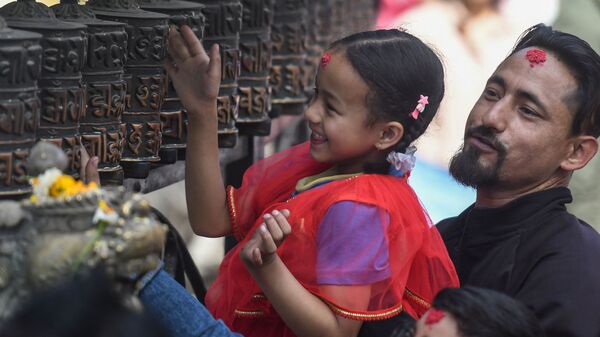Walking down the Tibetan market at Swayambhu, Nepal, an inexplicable but familiar feeling struck me. I had struggled with the question of ‘positionality’ as a researcher, especially while studying the community as an outsider. Often, I was baffled by how the narrow definitions of mainstream international relations (IR) tend to neglect long-drawn non-violent resistance movements, such as the Tibetan movement. Feminist perspectives on women, peace and security (WPS) take a differential approach to defining conflict and war. Feminist IR scholarship challenges the notion of conflict as comprising only immediate and overtly aggressive forms of conflict and views long-term, consistent and passive resistance to oppression as part of the larger WPS domain.
In this context, the Tibetan resistance to Chinese occupation is a long-term conflict that captures public imagination every now and then in India and Nepal, especially when security is tightened for a visit by a Chinese diplomat or statesperson. The consistently non-violent nature of the resistance taken up by the Tibetan exile community in South Asia has implications that go beyond the confines of international relations, reflecting the need to revitalize and re-operationalize terms such as ‘conflict’, ‘resistance’ and ‘oppression’.
One of the most misunderstood and misrepresented refugee communities in the world, the interpretational challenges that Tibetans in exile face can be said to be an extrapolation of a colonial imagination from two centuries ago. Such representations are politicized endeavours, as evident in history-writing exercises to define or dismantle Tibetanness or Tibetan nationhood. Note how Tibetans reinforce their nationhood through their own writing of history vis-a-vis Chinese attempts at oversimplifying that complex history to suit a colonization agenda. The effort of Tibetans both in exile and Tibet to control the narrative of their history is in itself a form of resistance, one that engages with a conscious retelling of the story from the subject’s perspective.
Headquartered in Dharamshala, Himachal Pradesh, the Central Tibetan Administration is an elected government in exile with political authority ever since the Dalai Lama renounced his political powers in 2011. The spiritual leader is a rallying point and unifying factor for the community. He is at the forefront of the resistance movement, advocating a middle path of non-violent resistance to Chinese occupation of Tibet. Besides, keeping alive Tibetan ways of living and cultural traditions can be viewed through a feminist lens as the best possible non-violent means of resistance in the Tibetan quest for an autonomous Greater Tibet comprising Kham, Amdo and U-Tsang.
However, given the very nature of the movement and exilic life, it has faced several criticisms, mainly from three quarters: the hegemonic state of China, from within the community, and from their host communities.
The Chinese Communist Party and state-controlled media are the least sensitive to Tibetan preferences. Their ultra-nationalist narrative which promotes Chinese languages and dismisses Tibetan modes of expression and autonomy, plus resource exploitation, are well documented. Re-education centres aim to suffocate that space further. Perhaps a much more brutal version of it is being practised in Xinjiang among the region’s Uighur Muslims.
Another challenge comes from within the exilic community. Many second and third-generation Tibetan refugees were born outside Tibet and living in host countries culturally distinct from their own can cause a dilemma of belongingness, complicated by the limbo of statelessness. There is also an internal struggle over what constitutes Tibetan identity for those who choose to marry outside the community. As global support for their cause dwindles and the economic and political clout of China rises, this will worsen too. Taking up another country’s citizenship has often been discouraged as an act of abandoning the cause, a charge which carries moral implications in such a tight-knit exile group.
Third, tensions between Tibetans and host communities pose challenges to peaceful co-existence in their adoptive countries. Rehabilitation and land resettlement in the 1960s and 70s were aimed at providing Tibetan refugees with economic means of survival and livelihood options. But inter-community friction can be traced to layered reasons that include economic envy or even marriages across community lines, some of which are seen to translate into resentment and non-cooperation, impacting the ideal of peaceful co-existence. As the Tibetan resistance unpacks real questions about what constitutes a long-term conflict, it is important to recognize the complex nature of its challenges and origin. This could produce a newfound interest and enthusiasm among international agencies and within academia and think-tanks to take up the issue of sustained resistance movements as part of security and conflict studies, thus giving the Tibetan resistance and similar struggles across the globe their due attention.
Sharon Susan Koshy is a visiting fellow at the Nepal Institute for International Cooperation and Engagement, Kathmandu
Download The Mint News App to get Daily Market Updates.
More
Less
Updated: 26 May 2023, 03:20 AM IST
#Examine #Tibetan #struggle #feminist #lens
